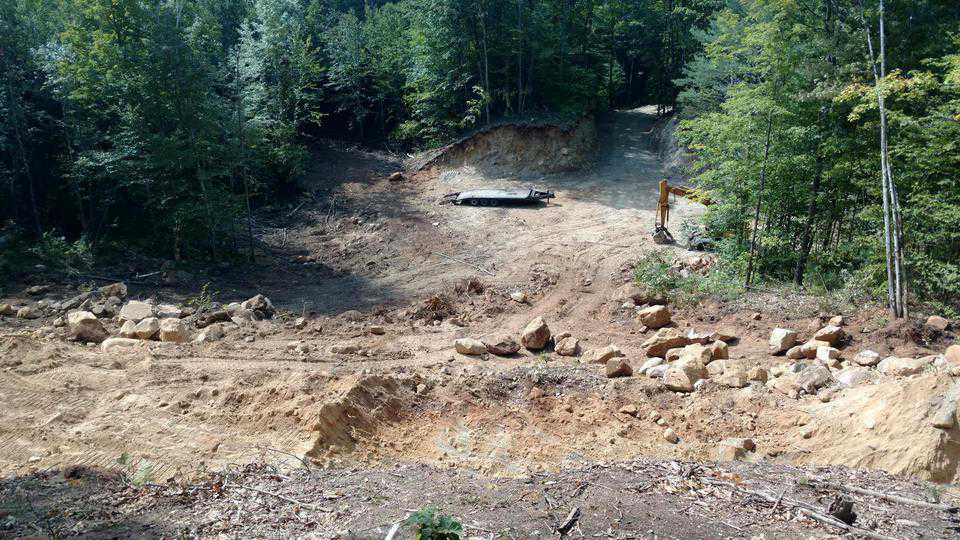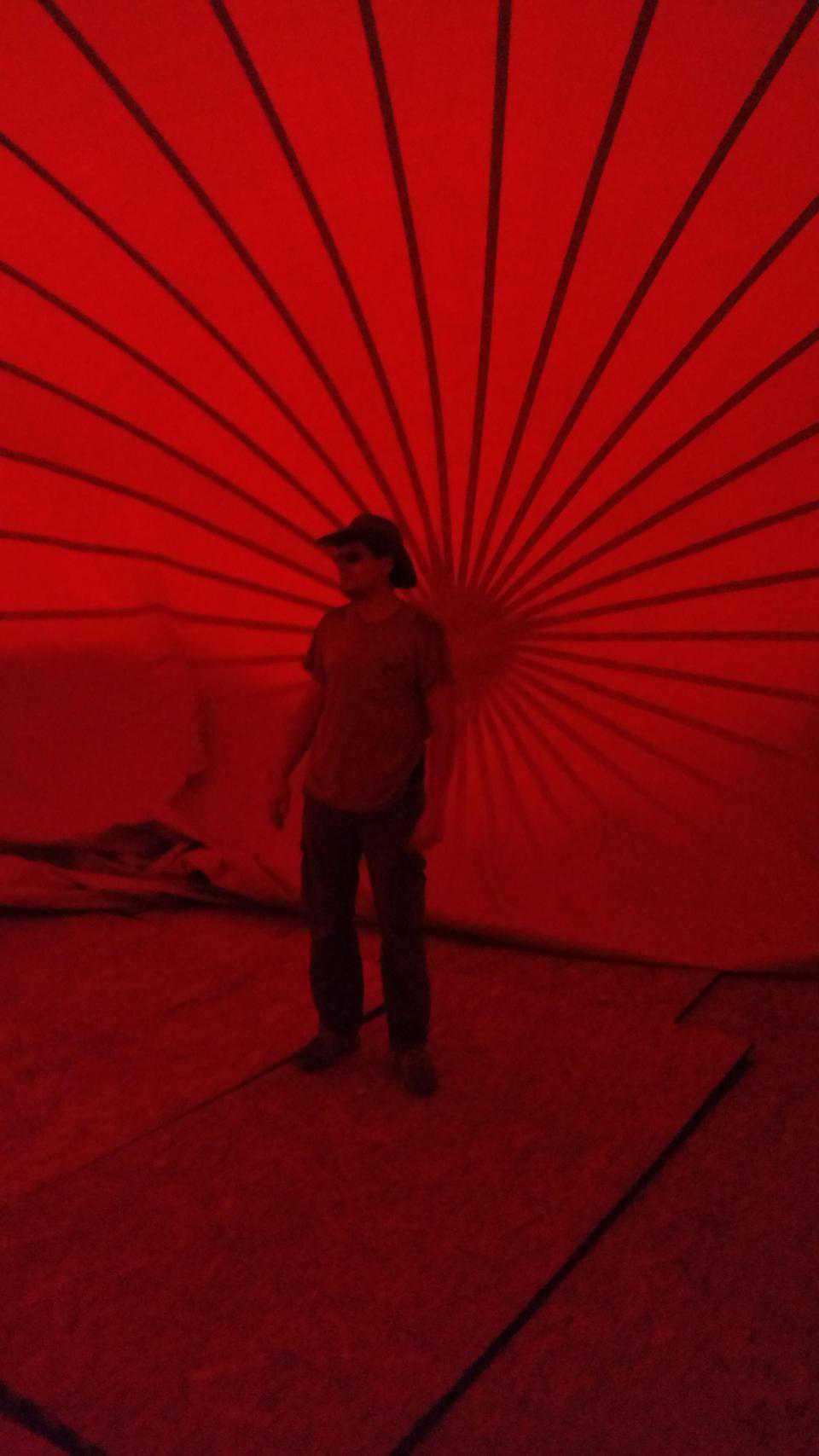Travis Pribusauskas lives in Maine near the New Hampshire border. His climate is wet and cold. He cites as an example a night that the temperature plunged to -84℉, which he called “a bad night.” While that was a bit of an outlier, he said that -30℉ in not uncommon. Due to these extreme temperatures, heating bills can be high.
Travis wanted to find a way to combat the high heating costs of a home. Over time, he decided to build a Monolithic Dome and bury it in the earth. “The single biggest expense in this part of the country is heating expense. It makes you want to cry,” he said. “Everything I’ve ever researched about Monolithic Domes and underground homes says the heating isn’t too bad.” He also chose a Monolithic dome is because it is “absurdly strong,” he said.
Finding a piece of property for this type of home took his several years. He stated that he has been looking for property for 14 years. The one he ultimately bought he found almost by accident. The site features a south-facing hill that he is building into and there are no cold north winds. “It was a wonderful piece of property that had been no no the market for 2 years and the seller was willing to make a deal,” he stated.
Building on the site was no easy task. A 20 foot ditch had be cut through the hill to build a road. The road was needed so a concrete truck could make it up the hill. After that, Travis recalled that the excavation took several months. When they excavated the site, bedrock was discovered, which meant the home location had to be moved. The footing was then put in.
Travis was going to put the dome in last year, but the weather had other plans. The spring of 2017 was a very wet spring, which Travis said turned the roads to “just mud.” Adding to his troubles, the concrete contractor he had hired went out of business and so he had to find another. By that time a new contractor was secured, it was September and October of 2017. He decided to wait until the spring of 2018 to build the dome because of the winter snow.
As part of that effort, this spring an electricity line was brought in from the street. That entailed stringing 960 feet of wire in an underground trench. After that was complete, an airlock was built.
The Airform was inflated a few weeks ago. Ten minutes into the inflation , it started to rain. “It was really pouring down rain,” Travis stated. “We probably moved 600 gallons of water off the Airform during the inflation.” What normally would have taken one hour for an inflation took over two hours. “But it went up. It went up no problem,” Travis said.
After the inflation, a contractor from New Hampshire sprayed the foam. After that was completed, rebar hangers were put up. The rest of the foam should be sprayed in the coming days, as well as the rest of the rebar. After that will come spraying the shotcrete and then framing. The finish work will take place next summer, due to the upcoming winter.
The home is going to be a three story building spread out over 6,450 square feet. The lowest level has three of a dead zone below the floor to allow for flooding, which happens often in this area of the country. Most of the home will be buried, with 25-30 at the top that will not be.
Travis is building the home for him and his wife, and their eventual children. The home is also being built large enough so relatives from Russia can come and stay. “It’s kind of a combination of an eventual full-time residence for me and my wife and a vacation home for family and friends,” he stated. Those family and friends should be proud of Travis when staying in his home, because he is overseeing the project and doing most of the work himself.

Looking up the valley to home location, before any work had been done. (Travis Pribusauskas)

Looking down at the home location, before any work had been done. (Travis Pribusauskas)

What the road to the site looked like before the new road was put in. (Travis Pribusauskas)

The site of the home after a bit of land clearing was completed. (Travis Pribusauskas)

Putting in the new road, as seen from the home location. (Travis Pribusauskas)

Another vantage point from the home location looking at the new road being put in. (Travis Pribusauskas)

The cuts made for the new road. The home site can be seen through the cuts in the dirt. (Travis Pribusauskas)

Travis on the new road. (Travis Pribusauskas)

Looking down at the home site after a week’s worth of digging. (Travis Pribusauskas)

A larger view of the site after a week’s worth of excavation. (Travis Pribusauskas)

The home site after two weeks of excavation. (Travis Pribusauskas)

A side view of the home site after three weeks of excavation. (Travis Pribusauskas)

A straight on view of the home site after three weeks of excavation. (Travis Pribusauskas)

The site of the home after the excavation was complete. (Travis Pribusauskas)

Roughing out the footing measurements at the site. (Travis Pribusauskas)

A view from the top of the hill at the home site. (Travis Pribusauskas)

The footing is complete. (Travis Pribusauskas)

During construction, it rained for the firs time in four months, thus creating an unwanted pond on the site. (Travis Pribusauskas)

The site after two winters, the footing stayed in place without any damage. (Travis Pribusauskas)

Spreading the Airform at the site over the footing. (Travis Pribusauskas)

The Airform is set out and ready to inflate. (Travis Pribusauskas)

The rain started right at the Airform was starting to inflate. (Travis Pribusauskas)

Inside the Airform during inflation. (Travis Pribusauskas)

Inside the Airform during inflation (Travis Pribusauskas)

The Airform fully inflated. (Travis Pribusauskas)

The Airform fully inflated from the back. (Travis Pribusauskas)
